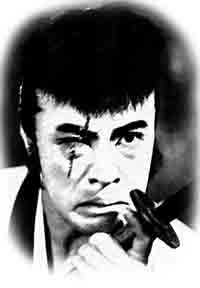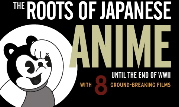A few weeks ago I wrote about academic film societies in Japan, and in particular the Japan Society of Image Arts and Sciences (Nihon Eizo Gakkai 日本映像学会). The JASIAS had its annual conference last weekend at the Arts Faculty of Nihon University in Tokyo, so I thought I'd report on it.
JASIAS conferences can be hit and miss. They are usually held the first weekend in June and schedule is often to have a symposium on Saturday and paper panels on Sunday. The society usually switches back and forth between holding the conference in Tokyo and holding it elsewhere (next year it will be in Sapporo), and the Tokyo sessions are much better attended with many more papers. So this time they had papers even on Saturday. The symposia, planned around a particular topic, are often a mish-mash of honored guests, which sometimes results in a lack of focused discussion. This year's topic was "The Digital and the Analog," but again the guests were too diverse to get a debate going. The famed photographer Hosoe Eiko was there, but his talk about digital as just one new tool in his toolbox did not quite mesh with talks about digital broadcasting. Okajima Hisashi, head of the Film Center and now president of FIAF, gave a needed talk about how bad digital is as a preservation medium, but everyone was too deferential to argue over the another panelist's assertion about improvements in digital archiving.
So this year, as with many years, I focused on the papers. The number of papers delivered has increased over the two decades I've been a member, and those members who make films also present them in a similar format as the papers (25 minutes with 5 minutes discussion). (In the old days, the films/videos were just stuck in another room and repeatedly played to few viewers.) There are not many full professors who give papers anymore: it is largely grad students and younger faculty who need to build up their CV or gyoseki. Not a few are ill-prepared or poorly thought out (one has to apply to give a paper, but not many are rejected), but this year had more gems than lumps of coal (since there were many simultaneous panels, with a total of 64 papers/films, I only caught a small fraction of them).
Of the ones I saw, the ones that particular interested me (this is subjective list) were the following (in no particular order):
- Sato Yo gave a historically ground-breaking talk on the incident in the 1950s when the film theorist Imamura Taihei was expelled from the Japanese Communist Party without his knowledge. The topic is quite delicate--as is anything having to do with the JCP--but it is an important first step to thinking about conflicts within the old Left over cinema, ones that often get ignored in celebrations of the New Wave.
- Nishimura Tomohiro gave an interesting talk about the concept of "animation" in Japan. First, while he noted the appearance of the term "animation" from before the 1950s--and also mentioned its use with Norman McLaren--he also argued that it was primarily through the popularity of the "Animeshon sannin no kai" in the 1960s that the term became public knowledge and came to denote a genre. His more provocative argument was that animation as a generic concept did not exist in the prewar, in the sense that the genre of manga eiga was not defined by the process of frame-by-frame animation, but by the resulting images, which made it possible for public discourse, for instance, to include live action ningyo eiga (puppet films) or kage'e eiga (silhouette films) in the same category as animated films. He argues the concept of defining the genre by the process, not by the result, is a phenomenon that occurs from the late 50s with the rise of Toei Doga and animators trying to differentiate themselves from that.
- Kamiya Makiko talked about the possible references to contemporary labor struggles (such as the Matsukawa Incident) in Makino Masahiro's "Jirocho sangokushi" series (particularly the ninth episode), a series that is usually just considered a bunch of entertainment films.
- Morimoto Jun'ichiro speculated about the processes of familiarizing audiences with "the voice" (particular the actor's voice) in the period up to the sound era, focusing on radio, live performances, and debates in the press.
- Itakura Fumiaki and Matsuo Yoshihiro gave an interesting talk about restoring tinted and/or toned prints from the silent era. (Some try to print them on color stock, but the best way is basically just to tint and tone them yourself.)
- Watanabe Daisuke talked about the film education movement in the early Showa era, focusing in particular on how discourse constructed "school" as a new and different place to view films. (Good old Gonda Yasunosuke, who appears in my new book, showed up in this talk a lot.)
- Ushida Ayami showed off a database of film criticism (which I might add is poorly indexed in the Zasshi Kiji Sakuin) published in the 1950s and 1960s. I hope she makes it public.
- Okamura Tadachika did a close analysis of Naruse Mikio's postwar films and tried to argue that the peculiar sense that Naruse is both emotional and coolly restrained derives from an editing style that often breaks off the exchange of glances.
These were just some of the many papers (I missed a couple I really wanted to hear). Some of these will probably be published in journals like Eizogaku, the journal of the JASIAS.
Finally, it was nice to see the newly remodeled Arts Faculty. Ogasawara Takao, a professor at Nichidai who was once one of the students involved in the legendary Nichidai Eiken along with Adachi Masao, reminded me that the last time Nichidai hosted the JASIAS conference was 14 years ago. That was actually the time I first gave a conference paper in Japanese. It was in an old room on one of the top floors of the old library. Now none of that is there. It is now a spanking new campus, with lots of technology for the filmmakers, but it didn't look like they put a lot of money into the architecture or creating a sense of warmth. But maybe I'm just getting old.
』(Serika Shobo, 2010)
』 (Bijutsu Shuppansha, 2010)
and of many great experimental films and documentaries, but he is also a major theorist of art and cinema. This is his most recent book, compiling conversations between Matsumoto and some of the major new Japanese media artists such as Kano Shiho, Ishida Takashi, and Maeda Shinjiro. There's also a talk with Japan's most prominent writer on experimental cinema, Nishijima Norio.


